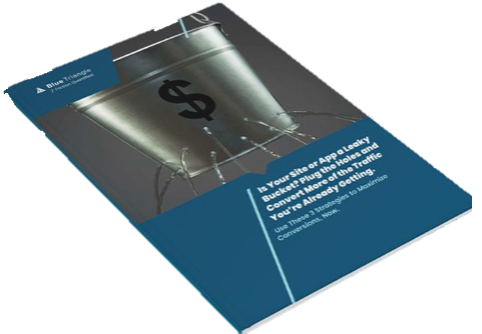5 Ways the Financial Services Industry Benefits from Delivering a Frictionless Experience
Ever tapped your phone to pay for coffee and walked out in less than a minute? That's the power of a frictionless experience. Gone are the days of fumbling with cash or waiting in long lines to make simple transactions. Today, customers and businesses alike want everything easy and quick.
Removing these obstacles doesn't just make your customers happy. It can help your bottom line and enhance your brand reputation.
But how does this seamless experience benefit the financial services industry?
Understanding Frictionless Experience in Financial Services
What is friction? According to physics, it is the force that resists the motion of one object sliding or rolling over another. When you slide a book across a table, it doesn't glide forever; it slows down and eventually stops. Why? Because friction between the book and the table works against the motion.
Friction occurs whenever two surfaces are touching. It can be helpful, for example, when you need to stop your car. The friction between the wheels and brakes helps you do that. But it can also be something you want to minimize, like when trying to slide a heavy piece of furniture across the floor.
In the financial world, friction is anything that slows down or complicates the process for customers or businesses. Like in physics, the goal is often to reduce this friction to make things move more smoothly.
What does 'frictionless' signify in financial services?
It's about making every interaction smooth and effortless for customers.
How can your customers log into their bank accounts? With a username/password combo that they have to remember or find? Or using only their fingerprints? The latter option is frictionless.
Once, I tried to set up a username and password to access my financial accounts. I always use long passwords that I store in a password vault. I set up my 20-character password only to constantly fail when trying to log in. After several unsuccessful attempts, I finally called my financial advisor. She called the IT department, and we finally figured out that there was a password limit of 18 characters. When I entered mine, the page would not fail or show an error message. It would accept my password, truncate it to 18 characters, and then save it.
No wonder I couldn't log in. I was always using the wrong password! Was this a frictionless experience? No! If I didn't have my money with them already, I would have bailed on this company. However, if I could use a different method, like my fingerprints, I would not have had this problem.
To provide a genuinely frictionless experience, you need to go beyond improving user interfaces on websites or mobile apps. Rethink your processes and policies. However, improving the user interface on the create password page would have solved my earlier problem.
It's all about making things as simple as possible for them.
So, how does this improve your business?
5 benefits of delivering a frictionless experience in Finance
1) Enhanced Customer Satisfaction
In finance specifically, even minor sources of friction could result in lost opportunities. In the US, 59% of consumers say they would switch to another company after several bad experiences, even if they love the company.
Any friction can increase operational costs and decrease customer satisfaction. This is especially true of financial companies.
Some customers might not want to wait in line at a bank branch to make deposits or transfers, especially with today's digital options.
What about a bank customer who needs to transfer funds from a checking account to a high-interest savings account? They log into your bank's app, and with just a few taps, the money moves instantly. No annoying security questions, no multiple screens asking for the same info over and over, just a quick and easy transfer.
This kind of simplicity leaves customers feeling not just satisfied but genuinely taken care of. And when customers feel that way, they stick with you. They're more likely to explore other services you offer, like loans or investment options. They'll also tell their friends about how great their experience was.
I love how easy my wealth management firm makes it to move money (password experience aside). I can transfer funds from my financial accounts with a few clicks, and the ACH transaction is sent. No need to go to the branch or talk to anyone.
So, make your customer interactions as smooth as a quick funds transfer. You can turn customer satisfaction into a powerful business asset.
2) Increased Operational Efficiency
Let's talk about your team. They're the engine that keeps your financial institution running, right? Now, think about how much time they spend on tedious tasks — fixing glitches, answering basic customer queries, or handling complaints. It adds up!
But when you create a frictionless experience, those issues start to fade away. Just like a well-oiled machine, operations run more smoothly.
Take the example of a streamlined loan approval process. Your team can rely on an efficient, automated system. They don't have to check many documents and cross-reference different databases. This speeds up approvals, reduces errors, and frees your team to focus on more complex tasks.
So, removing friction doesn't just make customers happy. It helps your team excel, making your entire operation more efficient and effective.
3) Higher Conversion Rates
Let's get down to the numbers because, let's face it, conversion rates are where the rubber meets the road. This is where you can really see the benefit of offering a frictionless experience. Imagine you've optimized the online application process for a new credit card or insurance policy. You can simplify a cumbersome process by removing the endless fields and confusing jargon. A new, streamlined application can be completed in a fraction of the time.
What happens? You'll likely see more people completing the application instead of dropping out halfway.
In the business world, we call this a higher conversion rate. Simplify it for potential customers so they take the actions you want them to take. You can improve their experience and boost your key performance indicators.
A frictionless process helps turn those "almost customers" into loyal, revenue-generating clients.
4) Competitive Differentiation and Positioning
In today's crowded financial landscape, standing out is more crucial than ever. If you and a rival firm offer similar wealth management services, what tips the scale in your favor? More often than not, it's how easy you make it for customers to engage with you.
Let's say your firm offers a user-friendly dashboard. Your clients can check their portfolios, make adjustments, and even chat with an advisor at the click of a button. Your competitor, on the other hand, has a clunky interface that feels like a maze. Who do you think the customer will choose for their long-term investment needs?
Offering a frictionless experience does not only serve your customers. It can also give your business a distinct competitive edge. In a world where everyone offers "excellent services," ease of use can give you a distinct advantage.
5) Fostering Trust and Compliance
Trust is the cornerstone of any financial relationship. When people trust your institution, they're more willing to explore and use your different services. Think about what happens when you remove obstacles and make everything straightforward.
If your insurance claim filing process is transparent and accessible, customers feel more secure. They know what's happening at each step and trust you more as a result.
This trust goes beyond customer satisfaction; it also fosters compliance. Say you are a payment processor that handles transactions for online retailers. Typically, compliance with financial regulations and security standards can be a maze of checkboxes and complicated forms for a retailer. But what if you made it frictionless?
Imagine a dashboard automatically showing the retailer their compliance status for various regulations like PCI DSS or GDPR. It could offer simple, step-by-step guides to resolve any issues. The dashboard could even auto-fill certain forms with the required information. With a system like this, the retailer is not just more likely to be in compliance; they're also more likely to trust you for making it so easy.
When processes are easy to follow, people are more likely to follow policies and regulations. This is a big win for both sides.
A frictionless experience can be a building block in a strong, trust-based relationship with your clientele.
Challenges Implementing a Frictionless Experience
Creating a seamless customer journey isn't a walk in the park. It's a lot like renovating an old house. You start removing walls, and suddenly, you're dealing with issues you never knew existed.
In finance, these can range from outdated technology systems to regulatory hurdles. For instance, you might find that your current IT infrastructure can't support the kind of streamlined loan processing you want. Or your compliance team may raise concerns about simplifying some processes because of regulatory requirements.
These challenges are real, but they're not insurmountable. The key is to tackle them head-on with a solid plan and a dedicated team.
Remember, the goal is to create a better experience that benefits your customers and business. And in today's competitive market, that's an investment worth making.

During the holiday rush, every shopper matters
Optimize the customer journey before the eCommerce event of the year.

.jpg)

